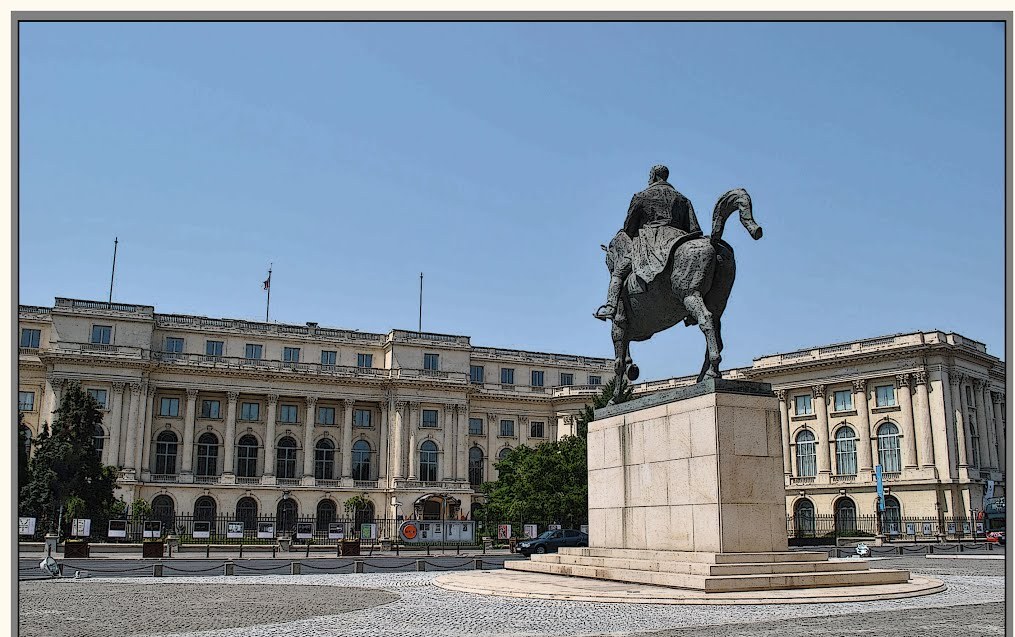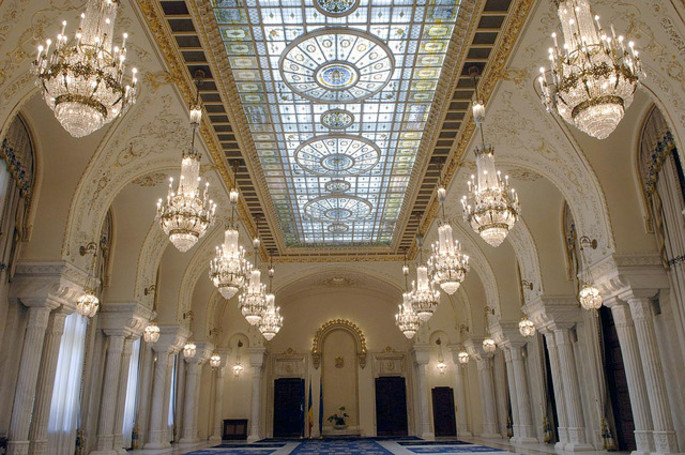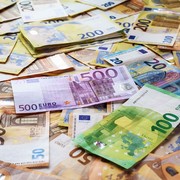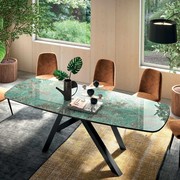On the vacant land next to Creţulescu Church (built between1720-1722) a merchant builds a house with cellar which he donated to the Creţulescu Monastery. Later, Dinicu Golescu transformed it into one of the most beautiful and impressive boyar house in Mogoşoaia Bridge area. The boyar house becomes then the Princely Court of Alexander Ghica Vodă.

Here also lived Alexandru Ioan Cuza, the one who unified Moldavia with Wallachia (January 24, 1859) and the creator of the modern Romanian state, named Romania. Starting with 10 May 1866, the palace became the residence of Carol I, the first king of Romania. In 1927, King Ferdinand decided to restore the building, ravaged by fire in 1926, bringing changes and improvements, a process continued by King Carol II. After the abdication of King Mihai, the palace passed into the government’s administration.
There are different architectural styles, from the neoclassicism of the Golescu's house to the eclectic style (with French Renaissance accents) of the two buildings rebuilt by Charles I. The architecture of the last palace adopts a classical style, developed on two levels, with impressive Corinthian pilasters and columns.
The interior architecture is varied, full of impressive decorations. The Royal pool situated in the basement has a decorative frieze with dolphins. On the second floor are still preserved some old elements: paneling, false niches, beams, illuminator boxes, including decorative elements: fireplaces, masks, grilles, emblems, moldings.
The Florentine Room is characterized by the ceiling which consists of wooden painted cassettes. The receptions hall situated at the ground floor has a ceiling formed by domed cassette which gives the impression that rests on 16 columns arranged on the perimeter. The Scale of Rulers is a monumental piece, recovered from old palace, which connects with the Throne Room. The painted cupola has at the base a frieze with embossed medallions which illustrate the most important Romanian rulers.
The palace which now houses the National Art Museum is itself a monument of art and history, and worth to be visited and admired.
































